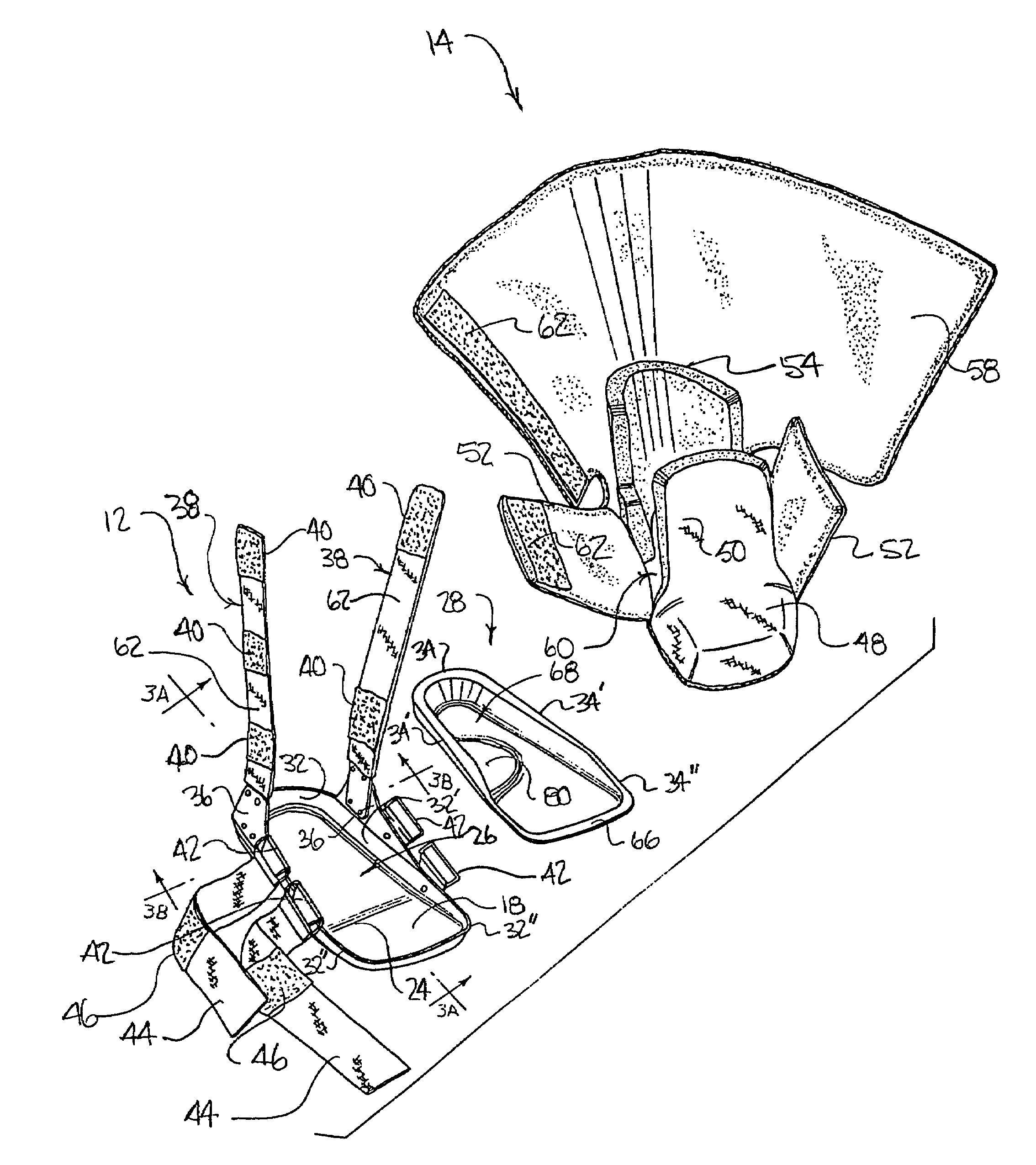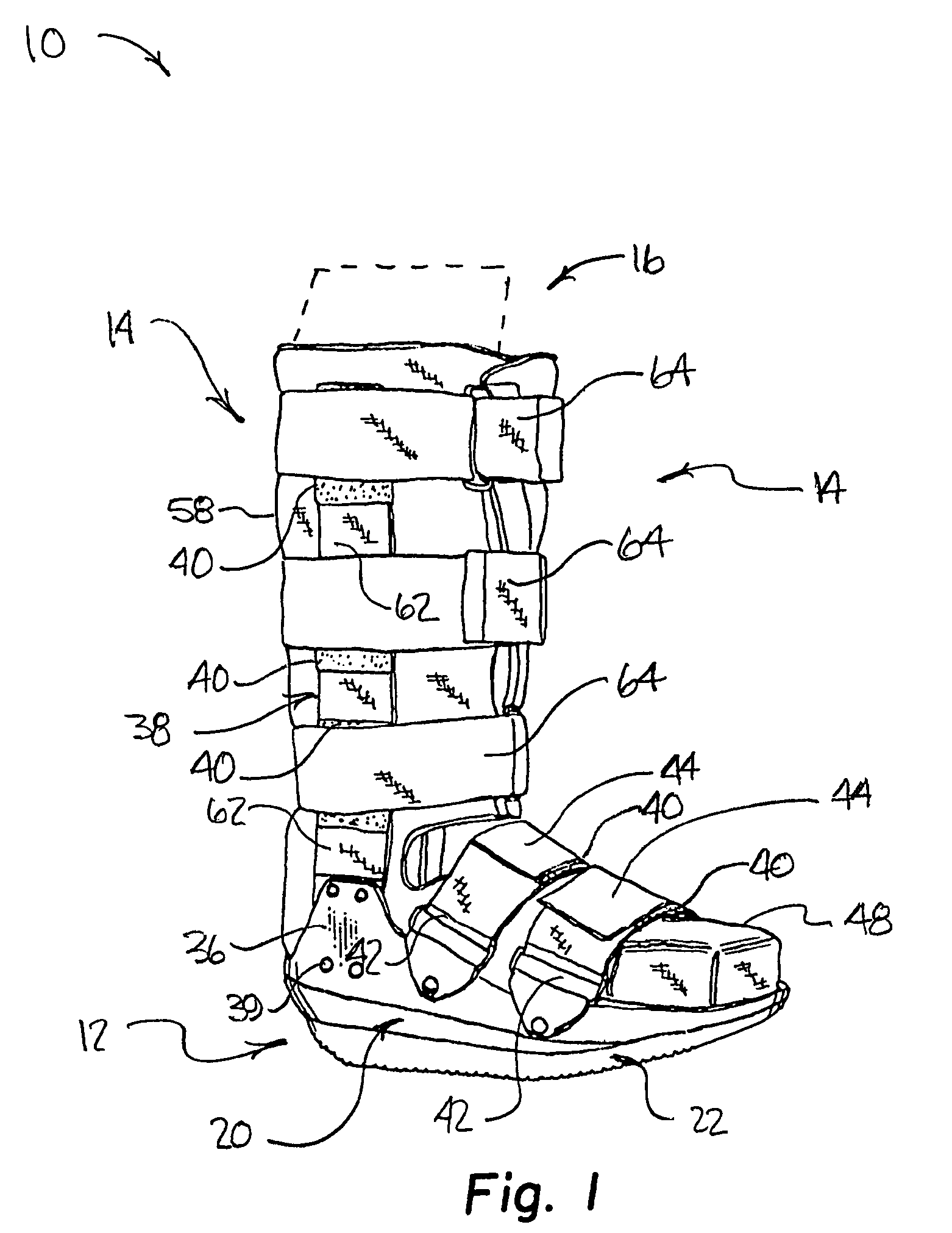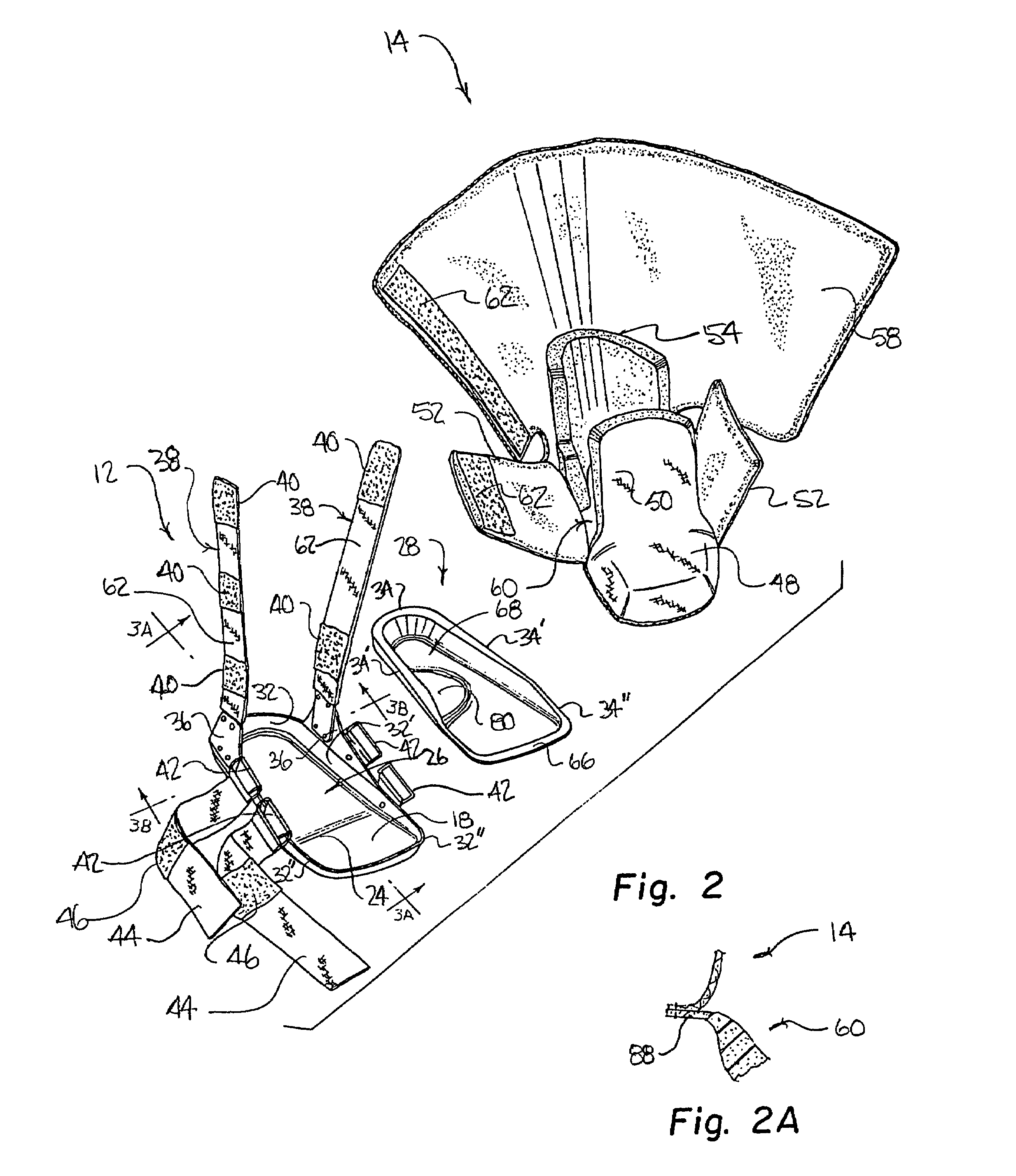Walking boot for diabetic and other patients
a walking boot and diabetic technology, applied in the field of orthotic support, can solve the problems of difficult to walk, difficult to walk, and often painful foot problems of this kind, and achieve the effect of good walkability and facilitate walking
- Summary
- Abstract
- Description
- Claims
- Application Information
AI Technical Summary
Benefits of technology
Problems solved by technology
Method used
Image
Examples
Embodiment Construction
[0061]In the description that follows, the improved walking boot for diabetic and other patients of the invention, is designated generally by the reference numeral 10. Throughout the description that follows, the same reference numerals will be applied to similar parts. Reference numerals with primes represent similar structure not exactly the same.
[0062]FIGS. 1 and 2 illustrate the combination of a walking shell generally designated 12 and what is referred to as a protective “bootie” generally designated by the reference numeral 14. This is more clearly seen in FIG. 2 where they are separated. FIG. 1 illustrates a combination in use on a patient's leg and foot 16 which will be referred to as foot 16.
[0063]Walking shell 12 in FIGS. 1 and 2 has an inner surface 18 and an outer surface 20 to which is attached a walking tread 22 preferably made of elastomeric material such as rubber. The shell is preferably bent slightly upwardly at what will be called a “rocker” line 24 which improves...
PUM
 Login to View More
Login to View More Abstract
Description
Claims
Application Information
 Login to View More
Login to View More - R&D
- Intellectual Property
- Life Sciences
- Materials
- Tech Scout
- Unparalleled Data Quality
- Higher Quality Content
- 60% Fewer Hallucinations
Browse by: Latest US Patents, China's latest patents, Technical Efficacy Thesaurus, Application Domain, Technology Topic, Popular Technical Reports.
© 2025 PatSnap. All rights reserved.Legal|Privacy policy|Modern Slavery Act Transparency Statement|Sitemap|About US| Contact US: help@patsnap.com



